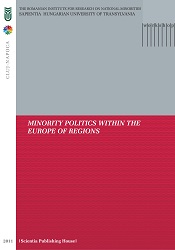To Be or Not to Be (A Minority)? The Case of the Kashubians in Poland
To Be or Not to Be (A Minority)? The Case of the Kashubians in Poland
Author(s): Michael Hornsby, Tomasz Wicherkiewicz
Subject(s): Politics / Political Sciences, Language studies, Language and Literature Studies
Published by: Scientia Kiadó
Keywords: Poland;European Charter for Regional or Minority Languages;Kashubian;territoriality
Summary/Abstract: When Poland signed the European Charter for Regional or Minority Languages on 12 February 2009, out of the fifteen languages listed all but one were categorised as minority languages. Kashubian was (apparently) the only regional language. Of course, the original wording of the Charter, when it was first drawn up in 1992, did not specify what the difference between a minority and a regional language actually was (Woerhrling 2005: 54). Thus Poland’s ratification, while totally complying with the Charter’s original wording, is nevertheless controversial in its application of the Charter’s principles. In this paper, we aim at exploring the tensions that have been created by the implementation of the Charter in Poland. The most obvious point of friction concerns the singling out of the Kashubian to the detriment of other less widely-used languages; this will be discussed in the context of one presenter’s expert knowledge and close association with the Charter’s implementation in Poland. Less obvious, but equally important, is the identification of the conflicting language ideologies at play here. If all minority languages in Poland (apart from Kashubian) are located within the confines of a ‘language-and-identity’ ideology, then locating Kashubian within a framework of territoriality (or a ‘language-andterritory’ ideology [Myhill 1999]) is not only bound to lead to a clash of counterproductive ideologies, but it also seems anachronistic at a time in the history of Kashubian when in only three districts of the traditional Kashubian-speaking area (Mordawski 2005: 56; Nestor and Hickey 2009) it is spoken regularly by more than 50% of the population. Given these conditions, we address the question of the effectiveness of such language planning for Kashubian in the final section of our paper.
Book: MINORITY POLITICS WITHIN THE EUROPE OF REGIONS
- Page Range: 141-153
- Page Count: 13
- Publication Year: 2011
- Language: English
- Content File-PDF

